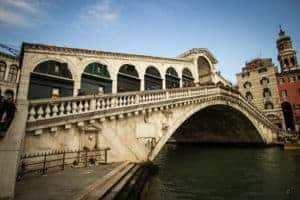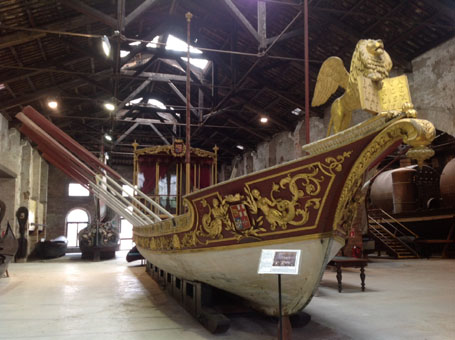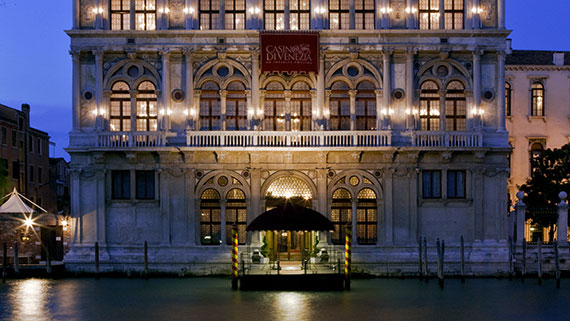Are you about to reach the island and feel that perhaps you could do with some ideas of what to see and do in Venice? Don’t worry, we’ll give you a hand to find out what you absolutely should not miss!
Let’s start with the most famous places to see in Venice: The majestic Piazza San Marco (St Mark’s Square) with the Basilica of San Marco; the Doge’s Palace, the Rialto bridge and the Rialto market, the bridge of Sighs, the Grand Canal, gallerie dell’accademia (the galleries of the academy) and the great school of San Rocco to name a few … We could actually go on and on with this list, but probably it would not be of much help. Let’s try instead to make some order and summarize a little to make your visit easier. Are you ready ? Let’s do it!
Venice Museums: discover the history of the Serenissima!

By now we have learnt how rich in history and art is Venice. So why not finding it out all the way, by visiting one of the many museums that are present here?
We have for example the Museo Correr, one of the most important of the island, located in the San Marco district, which illustrates beautifully the art, civilization and history of the island. It is part of the Civic Museums Foundation of Venice to which other museums also belong, such as the Murano Glass Museum, the Burano Lace Museum, the Natural History Museum and the International Gallery of Modern Art
We also have La Scuola Grande di San Rocco, an ancient building located in the San Polo district, the Accademia Galleries located in the Dorsoduro district, and the Peggy Guggenheim Collection which are of great interest.
St Mark’s Basilica Venice and its square… top venice attractions!

The church of San Marco, better known as the St Mark’s Basilica, is the cathedral and seat of the patriarchate of Venice.
Together with the Campanile, and the Palazzo Ducale, it marks the square of San Marco and forms the main architectural site of Venice.
It was built for the first time in 828 but over time it underwent many variations, including the most significant restoration in 1231 after a devastating fire.
The basilica is divided into three registers, namely the lower floor, the terrace and the domes and the width prevails over the height as it is more stable on the sandy ground.
A guided tour here is really a must, but we advise you to book a visit in advance, waiting times could be really long, so take advantage of the possibility to skip the queue … You will gain time to see many other things!
Palazzo Ducale Venice

Located next to the Basilica of San Marco, the Palazzo Ducale is one of the symbols of the city as the seat of the Doge and state magistrates. It was founded in 812 but as with most places of interest in Venice, it underwent human intervention over the years.
The first significant restructuring took place in 1173 by Nicolò Barattiero, who among other things built the Rialto bridge and erected the columns of San Marco and San Todaro, also located the San Marco district.
Today it is possible to visit the ducal palace almost entirely, and it is certainly one of the things we advise you to do if you really want to know the history of the Serenissima. If you like, take this leap into the past with us, we would be really happy to assist!
Scala Contarini del Bovolo

One of the lesser known tourist attractions in venice italy but which should absolutely be visited, we certainly have at the top of the list also the Scala Contarini del Bovolo.
Over the centuries the building has had several “owners” but only with the arrival of the Contarini family, it was enriched by this noble staircase. The name derives in part from the family, and partly from “bovolo” which in Venetian means snail.
The palace location between Rialto ( the economic heart of Venice) and San Marco ( the political heart of the city) was strategic, although no special view could be enjoyed. The Contarini family hence decided to add the Scala del Bovolo so they could enjoy one of the most magnificient views of Venice.
A visit to this jewel of art in Gothic style is really worth it, so wear your favorite sneakers and let’s go!
Jewish Ghetto Venice

The Jewish ghetto was the neighborhood where Jews were forced to live, and where the fulcrum of the Jewish community still exists.
It is located in the Cannaregio district and is home to several synagogues and other religious institutions.
However, this area was not always “Jewish land”; until 1516 it was the area in which the foundries were concentrated, these in Venetian were called “geto”, from which originally the name derives. With the decision to make it the area of residence for excluded minorities, the name was crippled until it became the term that is used today throughout the world. Curious right? Are you thirsty for “news” from the past and from different cultures? All you have to do is let yourself be guided in the soul of the synagogues of Venice.
Canals of Venice

Venice would not be the one we all see today in the 20th Century, if it weren’t for its canals, which make up the city’s navigation system.
Within the urban context we find:
- The Grand Canal
- The Cannaregio Canal
- The Giudecca Canal
- And the lesser known Canale della Scomenzera.
Generally only the first two are considered real Canals here, all the rest of Venice’s “streets of water” are called Rii. The walkable roads that run along the Riis are instead called Fondamenta, or Riva.
As you probably know, there are different ways you can navigate i Canali di Venezia: you could take one of the slow and romantic gondola rides, the faster water taxi or you could try the vaporetto (our local bus system but… on water!)
Venice Bridge : which one is which?
 Venice today, is very different from what it used to be. In fact, as weird as this sounds, originally there were no bridges at all! Why? People only used boats to go from one of the 121 islands to another – either their own or “public” ones. Because of technological progress, population growth, and the city’s increase in trade it became necessary to build routes that would connect the various areas.
Venice today, is very different from what it used to be. In fact, as weird as this sounds, originally there were no bridges at all! Why? People only used boats to go from one of the 121 islands to another – either their own or “public” ones. Because of technological progress, population growth, and the city’s increase in trade it became necessary to build routes that would connect the various areas.
This is how the 435 bridges of Venice are born. 300 are made of stone, 60 of iron, and the rest of wood. The most famous bridges in the floating city today remain the Rialto Bridge called Ponte di Rialto, famous for its row of shops, and the Bridge of Sighs connected to the Doge Palace. Follow the link for more on Venice bridge.
Arsenale Venice
 The Arsenal of Venice is the complex of shipyards and workshops that was the heart of the Venetian naval industry from the 12th century and is linked to the most flourishing period of the Serenissima: the Venetian Republic succeeded in conquering the routes of northern Europe thanks to the imposing ships built here.
The Arsenal of Venice is the complex of shipyards and workshops that was the heart of the Venetian naval industry from the 12th century and is linked to the most flourishing period of the Serenissima: the Venetian Republic succeeded in conquering the routes of northern Europe thanks to the imposing ships built here.
Part of the large complex is now home to the Historical Naval Museum which we recommend you to visit to gain a great insight to this part of the history of Venice. Another part of the complex is now used by the Venice Biennale for its contemporary art exhibitions, which of course you should visit if you are interested in art.
Venice Casino
 The historic Casinò of Venice is located in the magnificent palace Ca’ Vendramin Calergi, a perfect example of a renaissance style stately home and one of the most elegant buildings overlooking the Grand Canal. The palace was once the residence of the doges and Richard Wagner’s last dwelling place.
The historic Casinò of Venice is located in the magnificent palace Ca’ Vendramin Calergi, a perfect example of a renaissance style stately home and one of the most elegant buildings overlooking the Grand Canal. The palace was once the residence of the doges and Richard Wagner’s last dwelling place.
Most visitors take photos of the extraordinary exterior. However, for a richer experience we do recommend that enter the building as well. You will be able to play the games if you wish and dine at the exclusive restaurant dedicated to the composer.
Venice Market
 Visiting Venice Market could be an excellent way to meet some locals and an excellent opportunity to take some interesting photos. The colourful Rialto fruit and vegetables and fish markets are probably the most famous and easily accessible. In fact, as the name tell, they are located right next to Rialto Bridge. However, there are also some other, perhaps even less touristy markets you may consider visiting for an even more authentic experience.
Visiting Venice Market could be an excellent way to meet some locals and an excellent opportunity to take some interesting photos. The colourful Rialto fruit and vegetables and fish markets are probably the most famous and easily accessible. In fact, as the name tell, they are located right next to Rialto Bridge. However, there are also some other, perhaps even less touristy markets you may consider visiting for an even more authentic experience.
Venice Churches: you will be surprised!

Who said that to visit the places of interest of a city, one must necessarily spend a fortune? Several of Venice Churches can be explored without spending much or even for free. Among the most important we have:
- Basilica of Santa Maria della Salute, closely linked to the history of the Feast of the Redeemer.
- The Church of San Giorgio Maggiore, here you can climb to the top of the bell tower and enjoy an indescribable view of Piazza San Marco.
- The Church of Santa Maria dei miracoli, located in Cannaregio.
And the list could also be really long and endless, maybe we’ll talk more about it in the next articles. In any case rest assured that we haven’t promised you too much by saying that you certainly don’t have to spend a fortune to visit something important!
Theatre: Venice goes on stage!
Among the places of interest in Venice we could not fail to mention also the Theatre. Difficult to choose which one to talk about first.
Let’s start with what is now the main one: Gran Teatro La Fenice (The Great Theatre the Phoenix)! It is located in the San Marco district and was built in 1792. In its history it was destroyed and rebuilt twice, for the last time in 1996. A visit here would be, as with almost everything else, a must: you will be enchanted in front of so much elegance!
Then we have the Goldoni Theatre, located near the Rialto Bridge which was built in 1622 and is the oldest theater in Venice that still exists.
Among the best known, we also name the Malibran Theatre which was inaugurated in 1678.
So the choice is yours, be it to attend an opera performance, to see a show, or just a visit to your favorite theatre, don’t miss the Teatro Venezia!
The Gardens of Venice

The largest green area of Venice is called the Napoleonic Gardens or the Biennale; They are located in the Castello district and are home to the International Art Exhibition, as its name suggests.
In addition to this, the garden of Papadopoli, located in the Santa Croce district, and the Royal gardens located between Piazza San Marco and its basin are also known.
So, if you are tired of going up and down the endless steps of the bridges, if you want to relax a bit from the masses of tourists on the island, we suggest you to go for a few moments to rest in one of the public parks.
You may also like to read:
- Best time to visit Venice – which period should you go
- How many days in Venice – find ideas for 1,2,3 days and more
- Venice Events – every period has its own special event!
- Venice Carnival – the most famous event in Venice
- Venice Attractions – some of the jewels to see
- Venice Islands – tours and excursions to the islands
- Venice Tourism – the way we see it and the role you play

